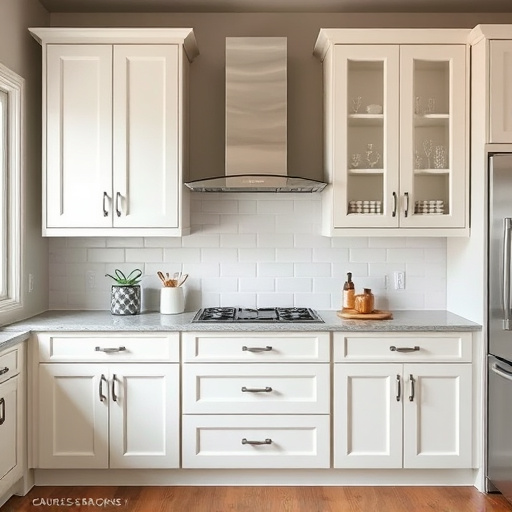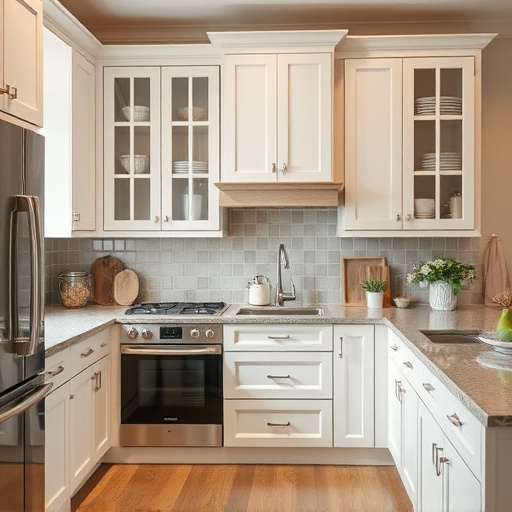Before starting a flooring replacement project, assess your needs, budget, and floor type requirements. Research material costs, labor rates, and potential hidden expenses to set a realistic budget. Choose flooring tailored to specific areas' aesthetics and functionality, considering natural textures for warmth or durable options for high-traffic zones.
Planning a successful flooring replacement project involves careful consideration from the initial assessment to final installation. This comprehensive guide walks you through each step, ensuring a seamless transition. First, assess your current flooring needs and budget—knowing what type of flooring suits your space and understanding cost factors is crucial. Next, research and select materials based on durability, style, and maintenance requirements. Then, plan the installation process, deciding between professional help or DIY, setting timelines, and managing project details to avoid delays.
- Assess Your Flooring Needs and Budget
- – Understanding the type of flooring you need
- – Setting a realistic budget and understanding cost factors
Assess Your Flooring Needs and Budget

Before diving into any flooring replacement project, it’s crucial to assess both your needs and budget. This step is fundamental in ensuring a successful renovation. Start by evaluating the current state of your floors—are they worn out, damaged, or simply outdated? Understanding these factors will help you determine the type of flooring that best suits your space and style. For instance, if you’re looking to enhance a bedroom with warm, inviting textures, natural materials like hardwood might be ideal. Conversely, high-traffic areas such as kitchens or hallways may require more durable options.
Concurrently, budgeting is an essential aspect of any renovation project, including flooring replacements. Home additions and bathroom renovations can quickly escalate in cost, so it’s important to set realistic expectations. Researching materials and installation costs for various flooring types will give you a clearer idea of the financial commitment involved. Moreover, considering renovation services that offer packages or discounts on bundled projects can help streamline your budget planning, ensuring your project stays on track without overspending.
– Understanding the type of flooring you need

When planning a flooring replacement project, one of the most crucial steps is understanding what type of flooring best suits your needs. Different materials offer various aesthetics and functional benefits tailored to specific areas of your home. For instance, hardwood floors exude warmth and elegance, making them ideal for living rooms or bedrooms. They add value to kitchen renovations and bathroom renovations, enhancing the overall look and feel of these spaces.
However, for high-traffic areas like hallways or entryways, consider durable options such as tile or vinyl. These materials are known for their longevity and ease of maintenance. Additionally, they can easily accommodate underfloor heating systems, providing comfort during colder months. When choosing flooring, factor in style, durability, cost, and the overall design vision for your home improvement services.
– Setting a realistic budget and understanding cost factors

When planning a flooring replacement project, setting a realistic budget is the foundation for success. It’s essential to factor in various cost elements such as material expenses, labor rates, and any necessary permits or fees. Researching different flooring options, comparing prices, and obtaining quotes from multiple contractors will help you gain an accurate understanding of financial requirements. Additionally, considering potential hidden costs associated with demolition, subfloor preparation, and any required home additions or kitchen remodel alterations is crucial for avoiding budget surprises during the project.
Understanding cost drivers ensures that your expectations align with reality. Customized home renovations often come with varying price points based on materials’ quality, complexity of installation, and the size of the space. By creating a detailed budget breakdown, you can effectively manage expenses and make informed decisions while ensuring your flooring replacement project stays within financial limits.
Planning a successful flooring replacement project starts with assessing your needs and setting a realistic budget. By understanding the type of flooring that suits your style and space, along with considering cost factors, you can ensure a smooth and satisfying transformation. Remember, proper research and preparation are key to achieving the perfect floor that enhances your living spaces.














